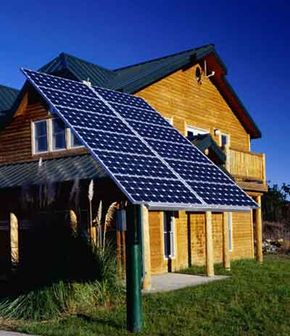Examples of Sustainable Communities
More than 400 ecovillages exist in the world, according to the Global Ecovillage Network database. The following examples outline life in just three of these communities.
Dancing Rabbit Ecovillage, Missouri
Dancing Rabbit Ecovillage is a developing 280-acre community in northeastern Missouri with far-reaching goals. It aims to be an entirely self-reliant town that practices "radical environmental sustainability," according to the community's Web site. The town's founders hope to attract between 500 and 1,000 residents to create a diverse community more capable of providing for all of its own needs [source: Dancing Rabbit]. Dancing Rabbit even has its own local currency to encourage local trading and sourcing of jobs.
Advertisement
The ecovillage has established a set of six guidelines that may seem extreme to the lazy environmentalists among us, but should set the town well on its way towards achieving sustainability.
- No vehicles are to be used or stored in the village.
- Fossil fuels for cars, refrigeration, heating and cooling homes, as well heating domestic water aren't allowed.
- All gardening must be organic.
- All power must come from renewable resources.
- No lumber from outside the local area is allowed unless it is recycled or salvaged.
- Organic waste and recyclable materials are to be reincorporated into usable products through composting methods.
Long term, Dancing Rabbit citizens are trying to achieve negative population growth. If they want the current 50 or so residents to become 500 or 1,000, they may want to rethink that last guideline.
Los Angeles Ecovillage, California
Los Angeles Ecovillage, California
You might think sustainable communities have to be set in the country, but that's not true. Located just three miles west of downtown Los Angeles, the Los Angeles Ecovillage (LAEV) is a community of 500 residents seeking to have minimal impact on the environment while also providing a fulfilling way of life [source: Los Angeles Eco-Village]. The urban location near public transit, schools, churches, commercial services and industry helps residents drive less, while the dozens of gardens and fruit trees provide a local source of food.
LAEV takes a whole-systems approach to sustainability, meaning that residents strive to balance the social, economic and environmental needs of the community. Here, clean water and air rank up there with close-knit relationships, ethnic diversity and affordable housing. Citizens have saved 20 tons of brick from the landfill to use in construction projects, composted over 100 cubic yards of yard waste and held countless weekly potluck dinners to establish and strengthen relationships. Who knew that sustainability could be possible even in one of the largest, most polluted cities in the United States?
Earthsong Eco-Neighbourhood, New Zealand
About 6,510 miles (10,477 kilometers) away in New Zealand, another environmentally minded community is sprouting up. Earthsong has joined the two concepts of permaculture and cohousing to form its own unique green community. Permaculture is a sustainable method of edible landscaping that minimizes energy and water usage, while cohousing is the sharing of common resources by a group of people.
Residents of Earthsong own their own homes, but they also have shared access to common land and a common house. The common house is where residents socialize and use amenities such as the library and the laundry and craft rooms. Individual houses in the neighborhood are made of rammed earth, which is a form of natural building material excellent at keeping houses cool in summer and warm in winter. In addition, homes are outfitted with solar panels, and their roofs collect rainwater.
Sustainable communities are just one kind of living arrangement that's easy on the Earth. On the next page, you'll learn about a few other kinds of eco-friendly developments.
